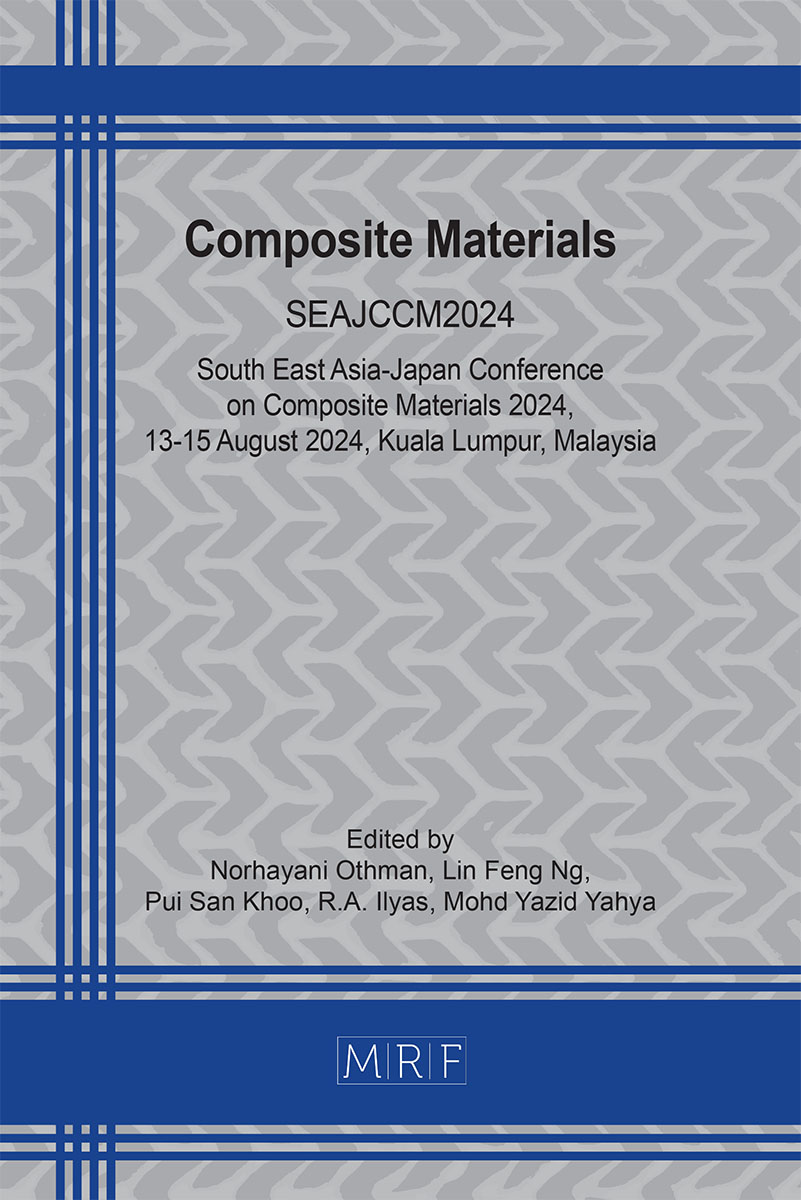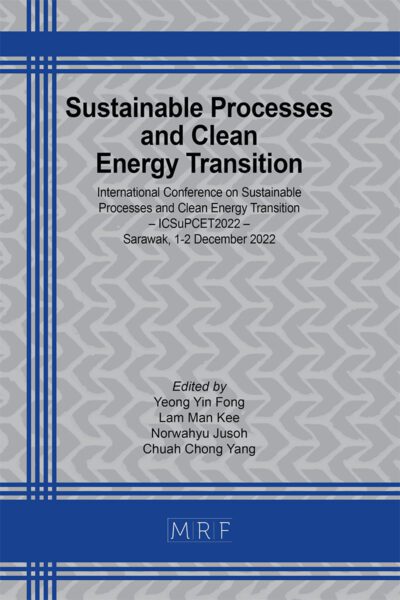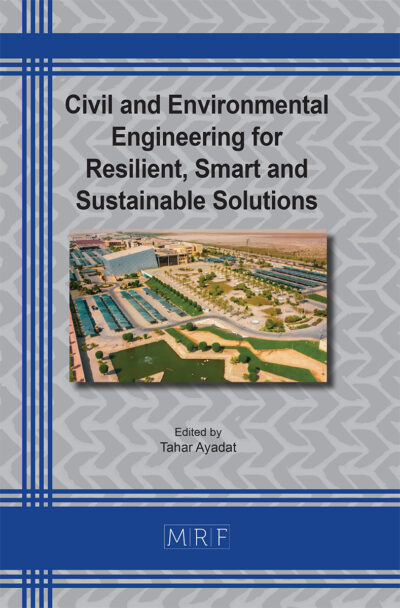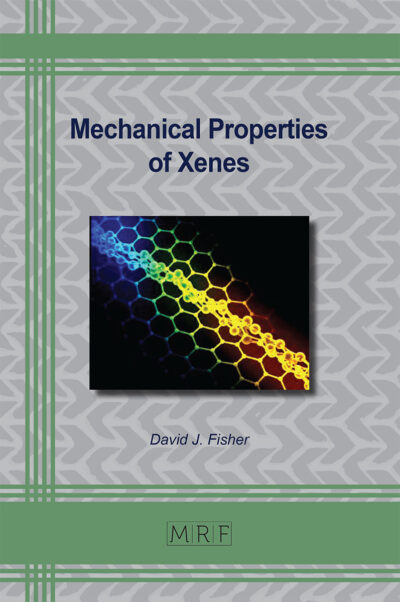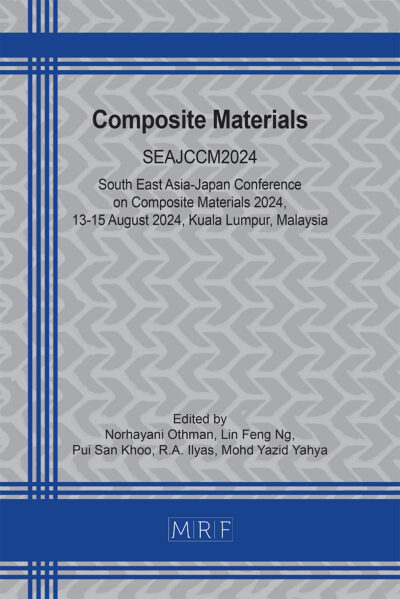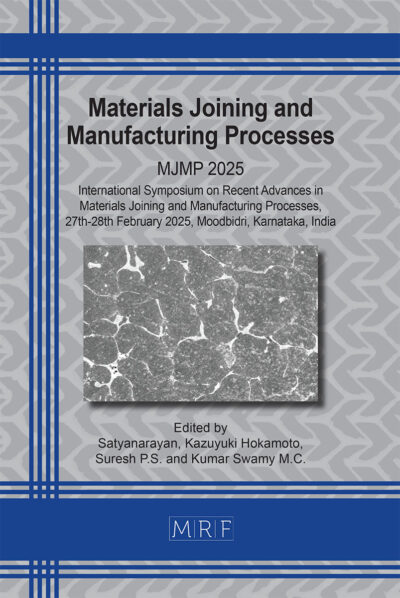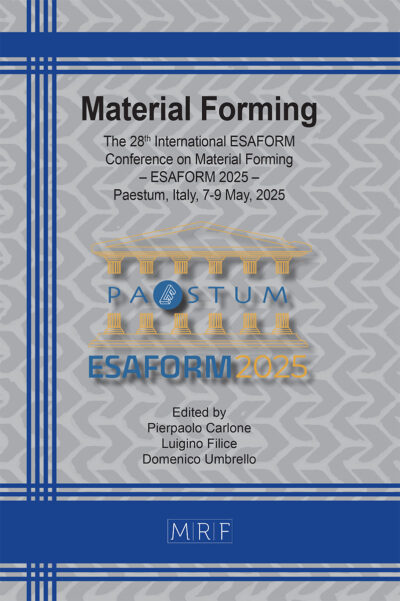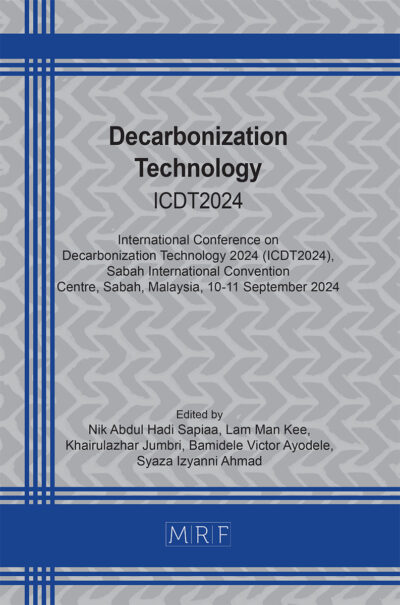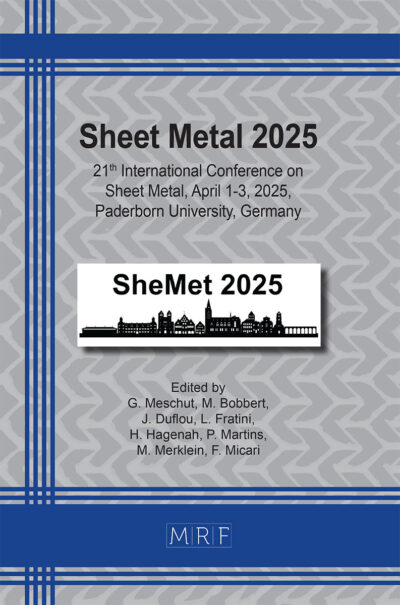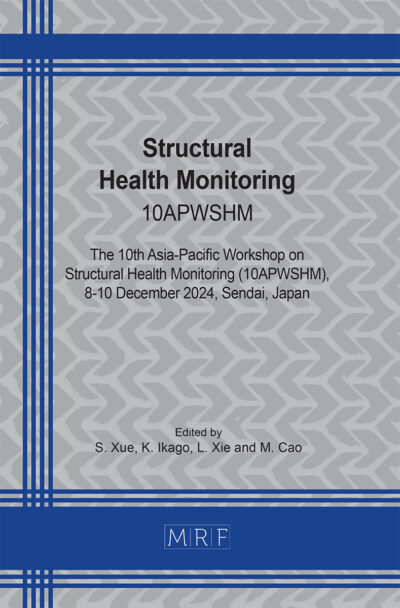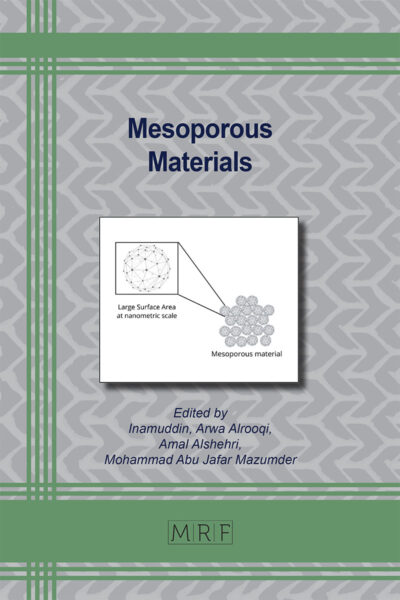Innovative Hematite-Incorporated Geopolymer Membrane from Coal Fly Ash through Direct Foaming Method
Rendy Muhamad IQBAL, Retno AGNESTISIA, Deni Shidqi KHAERUDINI, Elfrida Roulina SIMANJUNTAK, Hamzah FANSURI, Muthia ELMA, Mohd Akmali MOKHTER, Mohd Hafiz Dzarfan OTHMAN
Abstract. Fly ash generation is a continuously growing waste or by-product resulting from the combustion of coal, which is potentially to explore for membrane materials. The addition of hematite as an antifouling agent allows for the utilization of fly ash as a geopolymer-based membrane. The objective of this study is to create a hematite/geopolymer membrane utilizing type C fly ash by the direct foaming technique in order to enhance the porosity of the membrane. A homogeneous mixture was obtained by combining 65 grams of fly ash and 0.85 grams of Al(OH)3 with a base activator. Subsequently, 3 grams of hematite were added to the mixture. Subsequently, hydrogen peroxide (H2O2) was added as a foaming agent and gradually blended with different percentages of 0, 2, 4, and 6 weight percent (wt.%) into the paste mixture. The paste mixture was put into the mould and left to undergo the process of curing for a duration of 7 days. The fly ash was analysed using X-ray fluorescence (XRF), X-ray diffraction (XRD), and particle size analysis. Next, the membrane composite underwent characterization using XRD, FTIR, scanning electron microscope (SEM), and Archimedes techniques. The findings indicated that the fly ash from Pulang Pisau’s Power Plant was officially identified and categorized as type C class. The diffractogram revealed the presence of mullite, quartz, and hematite phases in the hematite/geopolymer membrane. This finding was further verified by the FTIR analysis, which detected molecular vibrations indicating the existence of the T-O-T (T= Si or Al) and O-H components of the geopolymer structure. The scanning electron microscope images reveal that the membrane surface exhibits a rough texture and contains a limited number of microcracks resulting from the direct foaming process. Additionally, the measurements of porosity indicate that the porosity of the membrane increases proportionally with increased concentrations of H2O2. This research demonstrates the potential of coal fly ash as a sustainable raw material for developing advanced membranes for wastewater treatment.
Keywords
Fly Ash, Geopolymer, Hematite, Inorganic Membrane, Direct Foaming
Published online 2025/06/01, 10 pages
Copyright © 2025 by the author(s)
Published under license by Materials Research Forum LLC., Millersville PA, USA
Citation: Rendy Muhamad IQBAL, Retno AGNESTISIA, Deni Shidqi KHAERUDINI, Elfrida Roulina SIMANJUNTAK, Hamzah FANSURI, Muthia ELMA, Mohd Akmali MOKHTER, Mohd Hafiz Dzarfan OTHMAN, Innovative Hematite-Incorporated Geopolymer Membrane from Coal Fly Ash through Direct Foaming Method, Materials Research Proceedings, Vol. 56, pp 1-10, 2025
DOI: https://doi.org/10.21741/9781644903636-1
The article was published as article 1 of the book Composite Materials
![]() Content from this work may be used under the terms of the Creative Commons Attribution 3.0 license. Any further distribution of this work must maintain attribution to the author(s) and the title of the work, journal citation and DOI.
Content from this work may be used under the terms of the Creative Commons Attribution 3.0 license. Any further distribution of this work must maintain attribution to the author(s) and the title of the work, journal citation and DOI.
References
[1] A. Abdullah, K. Hussin, M.M.A. Abdullah, Z. Yahya, W. Sochacki, R.A. Razak, K. Bloch, H. Fansuri, The effects of various concentrations of NaOH on the inter-particle gelation of a fly ash geopolymer aggregate, Materials 14 (2021) 1111. https://doi.org/10.3390/ma14051111
[2] D.A.P. Wardani, L. Rosmainar, R.M. Iqbal, S.N. Simarmata, Synthesis and characterization of magnetic adsorbent based on Fe2O3-fly ash from Pulang Pisau’s power plant of Central Kalimantan, IOP Conference Series: Materials Science and Engineering 980 (2020) 012014. https://doi.org/10.1088/1757-899X/980/1/012014
[3] I. Fatimah, P.W. Citradewi, R.M. Iqbal, S.A.I.S. Ghazali, A. Yahya, G. Purwiandono, Geopolymer from tin mining tailings waste using Salacca leaves ash as activator for dyes and peat water adsorption, S Afr J Chem Eng. 43 (2023) 257–65. https://doi.org/10.1016/j.sajce.2022.11.008
[4] M. Saukani, A.N. Lisdawati, H. Irawan, R.M. Iqbal, D.M. Nurjaya, S. Astutiningsih, Effect of nano-zirconia addition on mechanical properties of metakaolin-based geopolymer, J Compos Sci. 6 (2022) 293. https://doi.org/10.3390/jcs6100293
[5] S. Singh, S.K. Sharma, M.A. Akbar, Developing zero carbon emission pavements with geopolymer concrete: A comprehensive review, Transp Res D Transp Environ. 110 (2022) 103436. https://doi.org/10.1016/j.trd.2022.103436
[6] H. Fansuri, E. Erviana, M. Rosyidah, R.M. Iqbal, W.P. Utomo, Nurlina. Immobilization of chromium from liquid waste of electroplating home-industries by fly ash geopolymerization, IOP Conference Series: Materials Science and Engineering 367 (2018) 012049. https://doi.org/10.1088/1757-899X/367/1/012049
[7] F.S. Faradilla, Membran geopolimer berbahan dasar metakaolin yang dibuat dengan penambahan H2O2 secara direct foaming untuk pemisahan metilen biru, Doctoral dissertation, Institut Teknologi Sepuluh Nopember, Surabaya, 2021.
[8] H. Chen, Y.J. Zhang, P.Y. He, C.J. Li, H. Li, Coupling of self-supporting geopolymer membrane with intercepted Cr(III) for dye wastewater treatment by hybrid photocatalysis and membrane separation, Appl Surf Sci. 515 (2020) 146024. https://doi.org/10.1016/j.apsusc.2020.146024
[9] A. Naveed, Noor-Ul-Amin, F. Saeed, M. Khraisheh, M. al Bakri, S. Gul, Synthesis and characterization of fly ash based geopolymeric membrane for produced water treatment, Desalination Water Treat. 161 (2019) 126–31. https://doi.org/10.5004/dwt.2019.24283
[10] S. Subaer, H. Fansuri, A. Haris, M. Misdayanti, I. Ramadhan, T. Wibawa, Y. Putri, H. Ismayanti, A. Setiawan, Pervaporation membranes for seawater desalination based on geo–rGO–TiO2 nanocomposites: Part 2—Membranes performances, Membranes (Basel) 12 (2022) 1046. https://doi.org/10.3390/membranes12111046
[11] K.K. Katibi, K.F. Md Yunos, H.C. Man, A.Z. Aris, M.Z.M. Nor, R.S. Azis, Influence of functionalized hematite nanoparticles as a reinforcer for composite PVDF-PEG membrane for BPF rejection: permeability and anti-fouling studies, Journal of Polymers and the Environment 31 (2023) 768-790. https://doi.org/10.1007/s10924-022-02605-z
[12] A. Salama, R. Abouzeid, W.S. Leong, J. Jeevanandam, P. Samyn, A. Dufresne, M. Bechelany, A. Barhoum, Nanocellulose-based materials for water treatment: Adsorption, photocatalytic degradation, disinfection, antifouling, and nanofiltration, Nanomaterials 11 (2021) 3008. https://doi.org/10.3390/nano11113008
[13] D.E. Fouad, C. Zhang, H. El-Didamony, L. Yingnan, T.D. Mekuria, A.H. Shah, Improved size, morphology and crystallinity of hematite (α-Fe2O3) nanoparticles synthesized via the precipitation route using ferric sulfate precursor, Results Phys. 12 (2019) 1253–1261. https://doi.org/10.1016/j.rinp.2019.01.005
[14] H. Wan, L. Hu, X. Liu, Y. Zhang, G. Chen, N. Zhang, R. Ma, Advanced hematite nanomaterials for newly emerging applications, Chemical Science 14.11 (2023) 2776-2798. https://doi.org/10.1039/d3sc00180f
[15] D.S. Khaerudini, D.R. Insiyanda, Feasibility study of magnetite extracted from Indonesian mill scale through direct reduction promoted by graphite-based carbon, Journal of Chemical Technology & Metallurgy 55 (2020).
[16] D.S. Khaerudini, I. Chanif, D.R. Insiyanda, F. Destyorini, S. Alva, A. Pramono, Preparation and characterization of mill scale industrial waste reduced by biomass-based carbon, J Sustain Metall. 5 (2019) 510–518. https://doi.org/10.1007/s40831-019-00241-x
[17] N. Yong-Sing, L. Yun-Ming, H. Cheng-Yong, M.M.A.B. Abdullah, P. Pakawanit, P. Vizureanu, M.S. Khalid, N. Hui-Teng, H. Yong-Jie, M. Nabiałek, P. Pietrusiewicz, S. Garus, W. Sochacki, A. Śliwa, Improvements of flexural properties and thermal performance in thin geopolymer based on fly ash and ladle furnace slag using borax decahydrates, Materials 15 (2022) 4178. https://doi.org/10.3390/ma15124178 h
[18] N. Hui-Teng, H. Cheng-Yong, L. Yun-Ming, M.M.A.B. Abdullah, C. Rojviriya, H.M. Razi, S. Garus, M. Nabiałek, W. Sochacki, I.M.Z. Abidin, N. Yong-Sing, A. Śliwa, A.V. Sandu, Preparation of fly ash-ladle furnace slag blended geopolymer foam via pre-foaming method with polyoxyethylene alkyether sulphate incorporation, Materials 15 (2022) 4085. https://doi.org/10.3390/ma15124085
[19] F. Xia, S. Cui, X. Pu, Performance study of foam ceramics prepared by direct foaming method using red mud and K-feldspar washed waste, Ceram Int. 48 (2022) 5197–203. https://doi.org/10.1016/j.ceramint.2021.11.059
[20] S.S. Alterary, N.H. Marei, Fly ash properties, characterization, and applications: A review, J King Saud Univ. 33 (2021) 1–8. https://doi.org/10.1016/j.jksus.2021.101536
[21] S.K. Nath, S. Kumar, Role of particle fineness on engineering properties and microstructure of fly ash derived geopolymer, Constr Build Mater. 233 (2019) 1–9. https://doi.org/10.1016/j.conbuildmat.2019.117294
[22] Z. Yahya, M.M.A. Abdullah, K. Hussin, K.N. Ismail, R.A. Razak, A.V. Sandu, Effect of solids-to-liquids, Na2SiO3-to-NaOH and curing temperature on the palm oil boiler ash (Si+Ca) geopolymerisation system, Materials 8 (2015) 2227–42. https://doi.org/10.3390/ma8052227
[23] D. Yan, Y. Shi, Y. Zhang, W. Wang, H. Qian, S. Chen, Y. Liu, S. Ruan, A comparative study of porous geopolymers synthesized by pre-foaming and H2O2 foaming methods: Strength and pore structure characteristics, Ceram Int. 50 (2024) 17807–17. https://doi.org/10.1016/j.ceramint.2024.02.270
[24] M.F. Ismail, M.A. Islam, B. Khorshidi, A. Tehrani-Bagha, M. Sadrzadeh, Surface characterization of thin-film composite membranes using contact angle technique: Review of quantification strategies and applications, Adv Colloid Interface Sci. 299 (2022) 102524. https://doi.org/10.1016/j.cis.2021.102524
[25] X. Wang, Q. Zhang, Role of surface roughness in the wettability, surface energy and flotation kinetics of calcite, Powder Technol. 371 (2020) 55–63. https://doi.org/10.1016/j.powtec.2020.05.081

